Weekly recap
US stocks booked solid gains last week as the Trump trade resumed and equity markets brushed off concerns over rising geopolitical tensions between the West and Russia.
The US economic calendar was relatively light, with just strong US PMI data highlighting the divergence between US economic strength and weakness in Europe. Eurozone PMI data showed the economy contracted in November, raising concerns over the region’s outlook. European stock indices underperformed the US, with the EuroStoxx 50 falling across the week, while the S&P 500 rose 1.7%.
However, the big moves were seen in the FX and commodities market. The USD rallied to a 2024 high against its major peers. Meanwhile, EUR/USD fell to a 2-year low on the diverging outlook, and GBP/USD also fell to a 6-month low.
Meanwhile, Gold rallied over 5%, boosted by safe-haven demand after Russian President Putin lowered the bar for a nuclear war and ramped up the war against Ukraine.
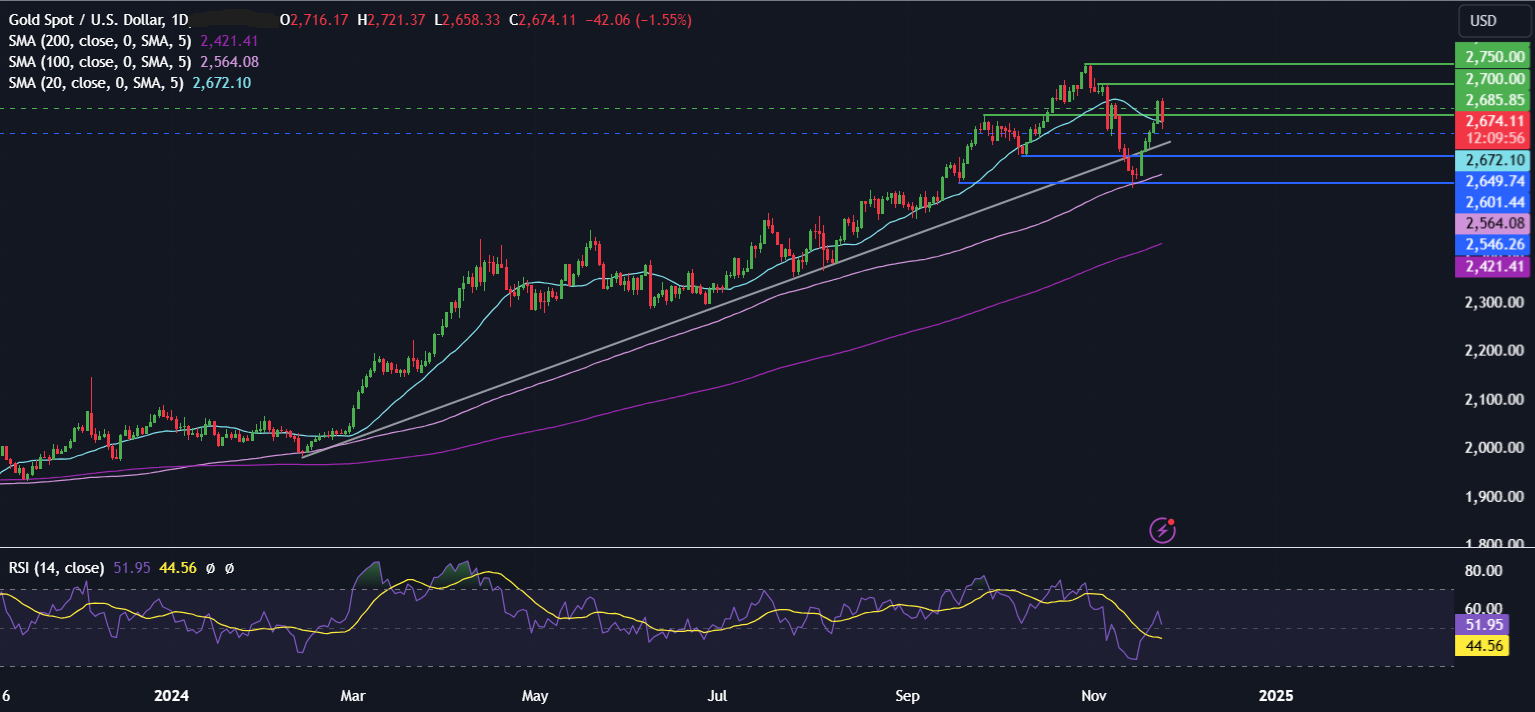
Week ahead
This week is a holiday-shortened week owing to the US Thanksgiving holiday. Volumes could be lower than usual.
FOMC minutes (Tuesday)
The minutes of the November FOMC meeting will be released. At the meeting, the Federal Reserve cut interest rates by 25 basis points, marking the second back-to-back rate cut. The market will scrutinize the minutes for further clues about the outlook for interest rates. However, it’s worth noting that the November meeting happened before the US election results, which means they could be considered out of date.
Since the November meeting, inflation data came in hotter than expected, and treasury yields have risen on expectations of more inflationary policies from Trump when he takes power next year.
Recent Fed speakers have sounded less dovish, alluding to a slower pace of interest rate cuts owing to sticky inflation, the solid US economy, and the resilient labor market. With this in mind, the minutes of the FOMC meeting may have less impact than usual.
That said, a hawkish-sounding Fed could limit the upside to stocks after solid gains last week.
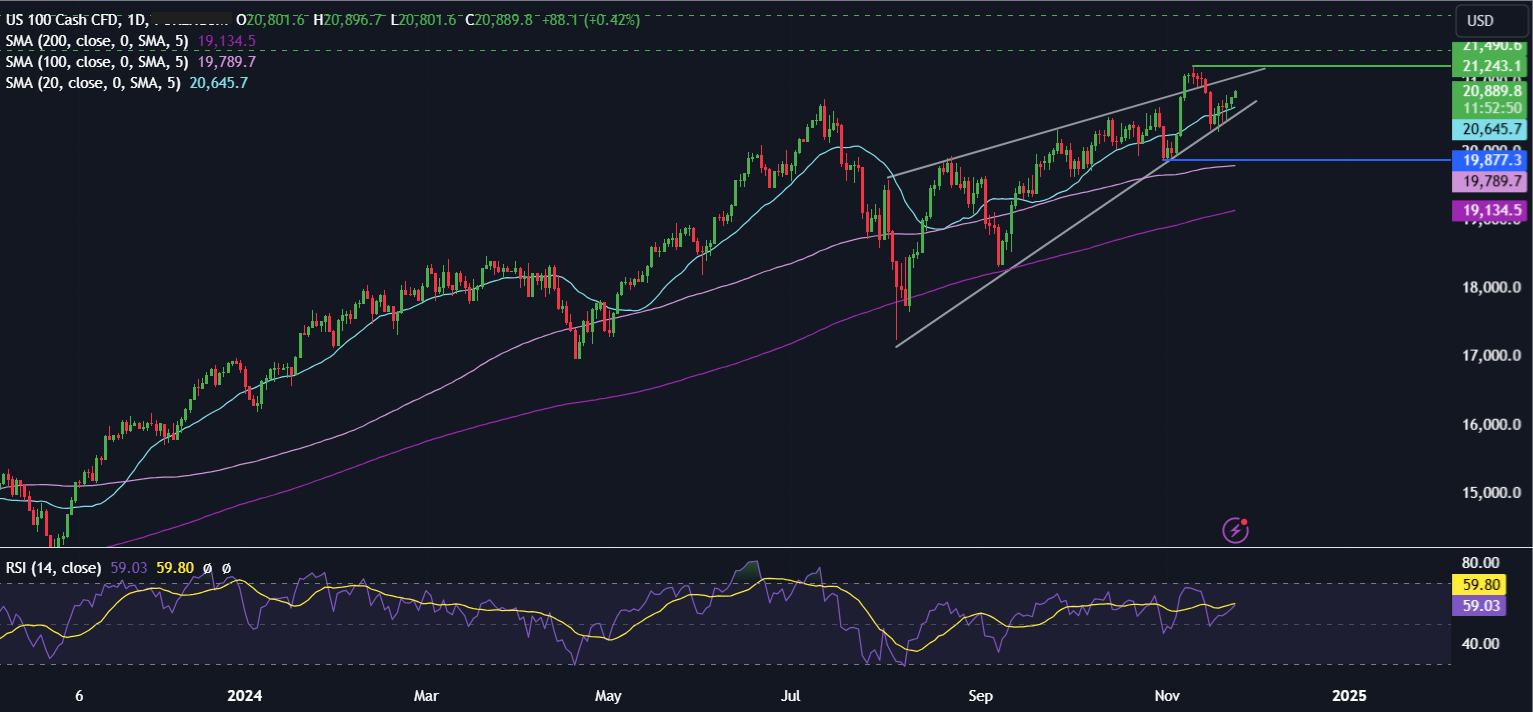
RBNZ rate decision (Wednesday)
The RBNZ will announce its interest rate decision on Wednesday and is expected to cut rates by 50 basis points following the 50 basis point rate cut last month. The move comes as New Zealand’s economic activity shows little sign of recovery. Recent sentiment surveys are still in recessionary territory, highlighting the need for a much less restrictive monetary policy. Inflation expectations remain within the target range of 1% to 3%, providing the RBNZ headroom to cut aggressively. City’s economic surprise index for the region also remains negative, showing data consistently underperforming expectations almost three months into the easing cycle.
The market is pricing in an 80% probability of a 50 basis point cut and a 20% probability of a larger 75 basis point cut. The central bank moved from 25 to 50 basis point cuts in September, although a second jumbo rate cut could amplify economic concerns. That said, the risk of doing too little outweighs concerns over market perception.
A dovish-sounding RBNZ could push NZD/USD toward the 2023 low.
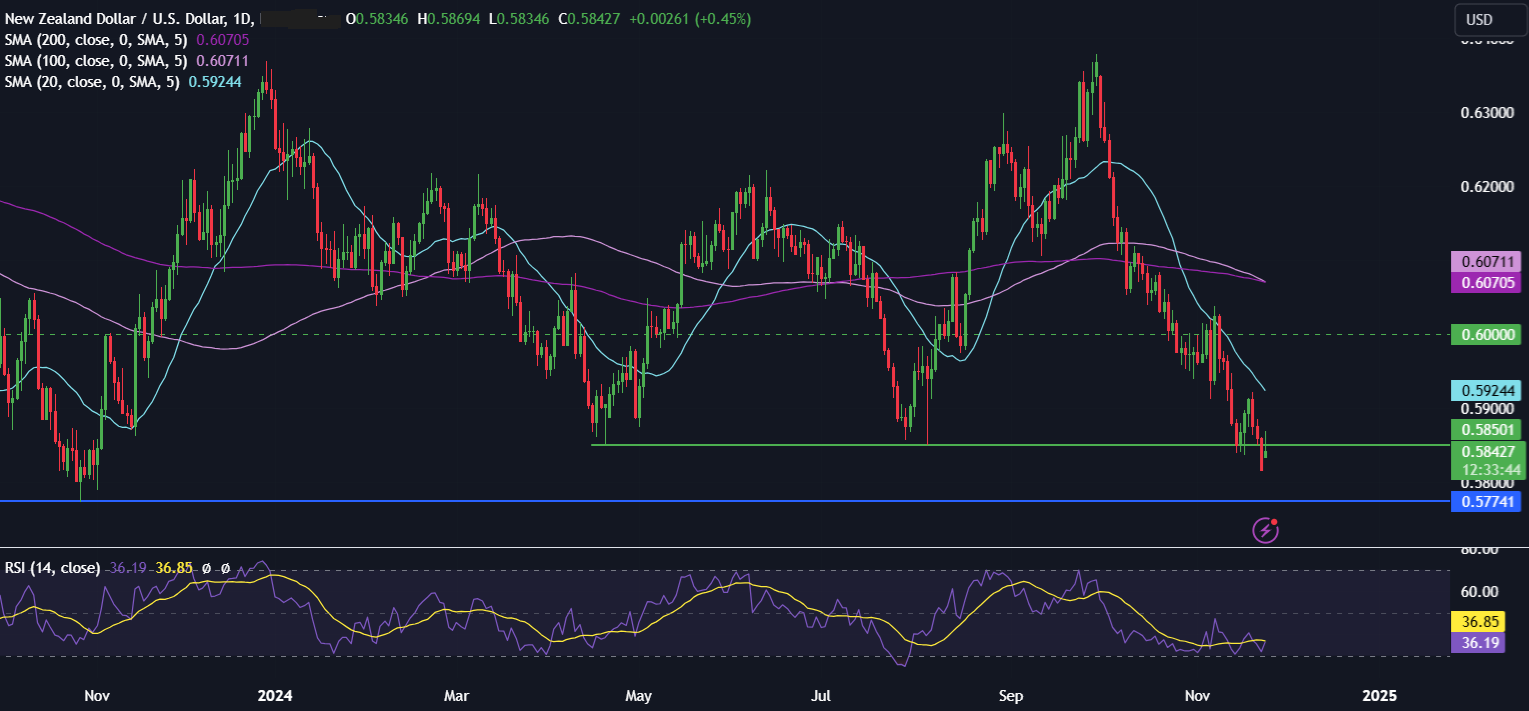
US core PCE (Wednesday)
The Fed’s preferred gauge for inflation will likely be a key focus this week. Core PCE is expected to rise to 2.8% annually, up from 2.7% in September, while core PCE is expected to rise 0.27% monthly, almost in line with the gains seen in CPI inflation data. Large gains in shelter prices are a smaller factor in core PCE data, but that’s been offset by a surge in portfolio management costs, which rise and fall with the stock market.
Sticky inflation, the resilient labor market, and solid growth mean that the Federal Reserve is adopting a more hawkish stance towards cutting interest rates, particularly given that the incoming Trump administration is also expected to implement inflationary measures.
Hotter-than-expected core PCE could further dampen the market’s expectations for a rate cut. The market is currently pricing in a 56% probability of a rate cut in December, down from around 80% just a few weeks ago. The market also sees fewer cuts across 2025.
Hot inflation could boost the USD and pull dollar crosses, such as GBP/USD, lower.
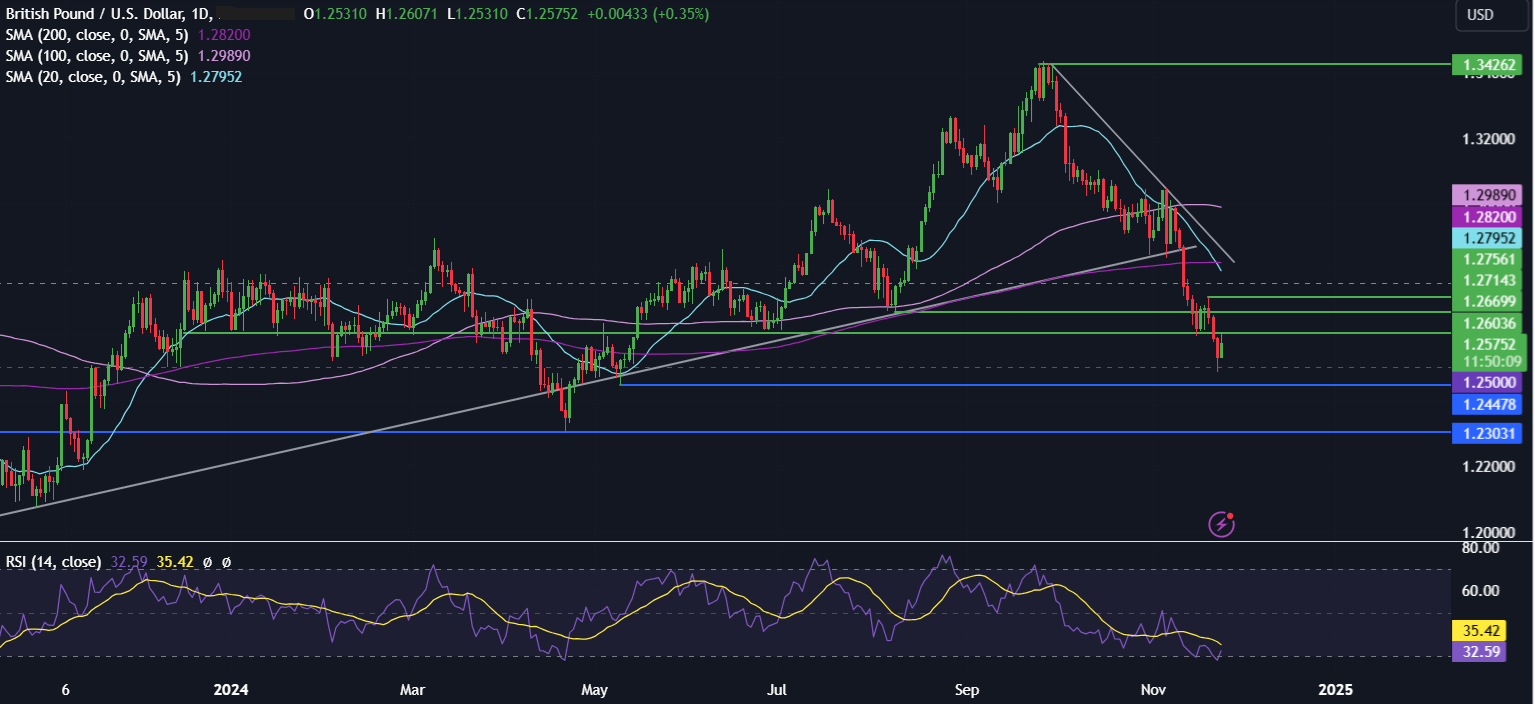
Eurozone inflation (Friday)
Eurozone Inflation rose to 2% annually in October, up from 1.7% in September, hitting the ECB’s target level. Last month’s data showed that service sector inflation was the main driver of price increases, up 3.9% yearly. While data last week showed that negotiated wages had risen sharply in Q3, the more timely PMI data showed the region heading into contraction territory, with the services PMI below the key 50 level at 49.2.
Concerns over the region’s economic outlook remain, which will likely keep the ECB on track for another rate cut in December. The market is expecting a 25-basis-point cut. However, after the contracting PMIs, a cooler-than-forecast inflation print could fuel 50-basis-point rate cut expectations.
EUR/USD is struggling around a 2-year low due to diverging ECB—Fed monetary policy outlooks and the weakening economic outlook for the Eurozone.
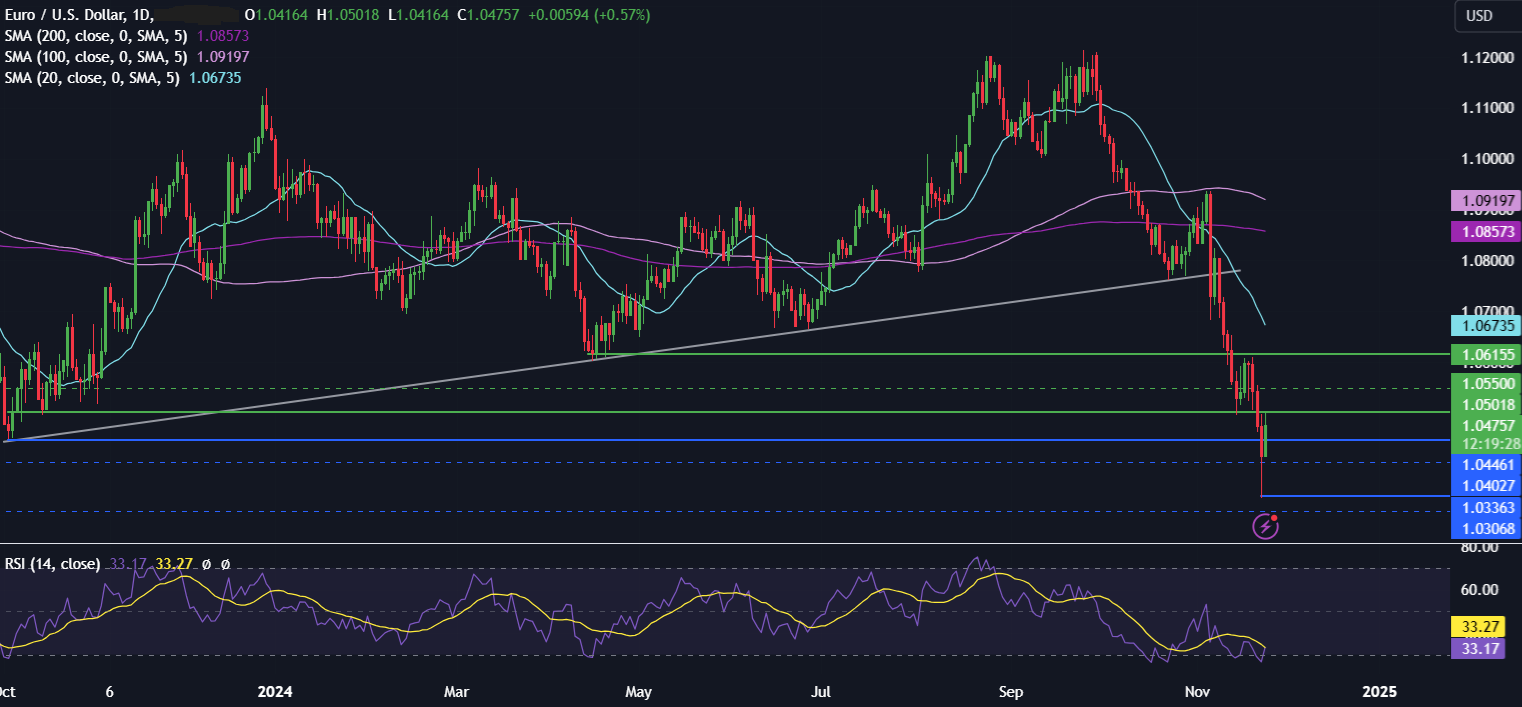
Canada GDP (Friday)
Attention will be on Canada’s GDP data after August figures showed the economy stalled. Economists expect the economy to have grown 0.2% in September, which should leave Q3 reading at 1%, slightly below the BoC’s 1.5% forecast. The Canadian economy is a concern for the Bank of Canada, which cut interest rates by 50 basis points in the October meeting as growth has fallen in the recent quarter. Weak growth could further highlight the growing divergence between the US and Canada and the outlooks of the Fed and BoC, potentially boosting USD/CAD higher.
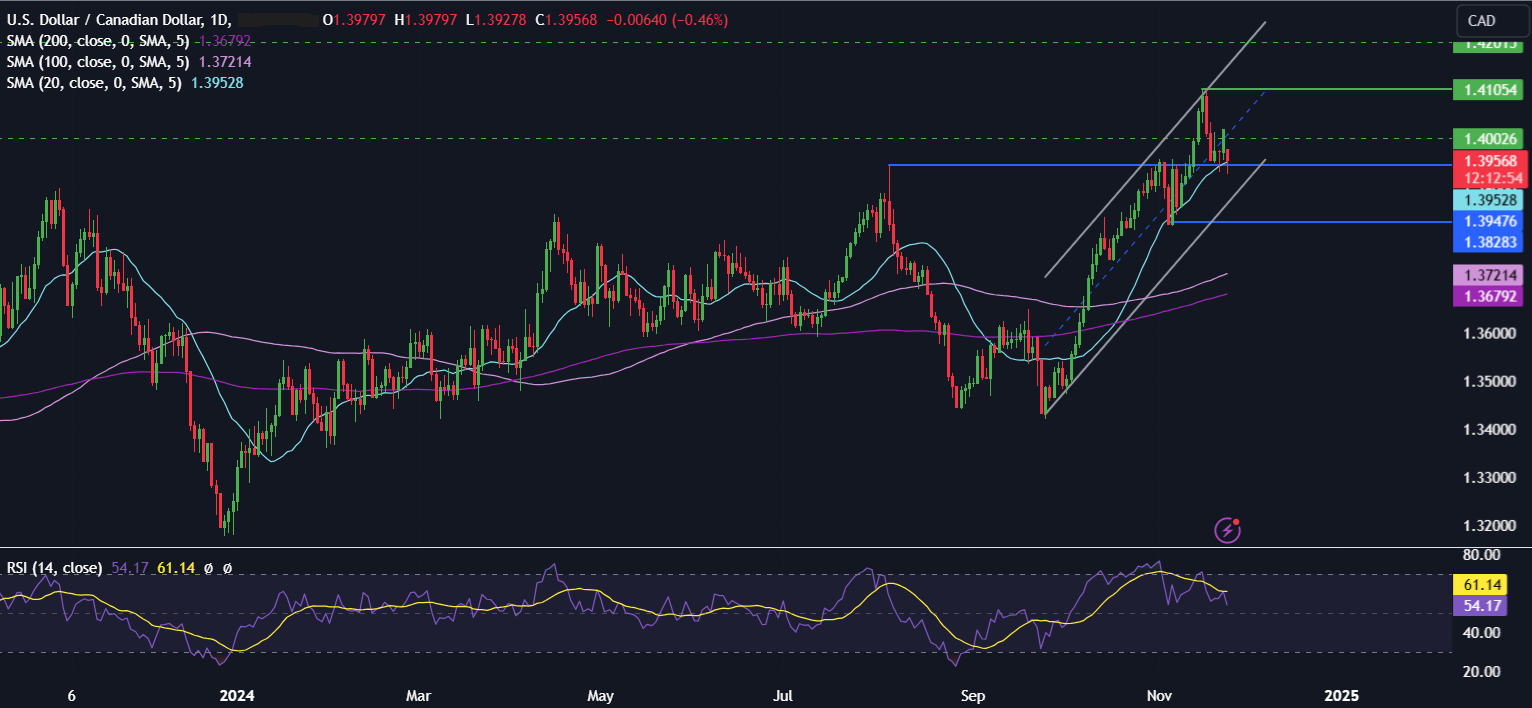
Tokyo inflation (Friday)
Consumer inflation in Tokyo for November is expected to have surpassed the Bank of Japan’s 2% target amid a major reduction in fuel subsidies and food costs. Tokyo CPI, often considered a good lead indicator for nationwide price trends, is expected to have increased 2.1% annually in November, up from 1.8% in October when it was below the central bank’s target for the first time in five months.
The data comes after Japan’s nationwide core CPI slowed slightly to 2.3% in October from 2.4% in September.
The data also comes ahead of December’s BoJ monetary policy meeting, where the central bank is expected to consider hiking rates again if the economy and prices move in line with forecasts. Last week, BoJ governor Ueda reiterated that the central bank will reach a decision meeting by meeting.
Hotter Japanese inflation could pull the USD/JPY lower.
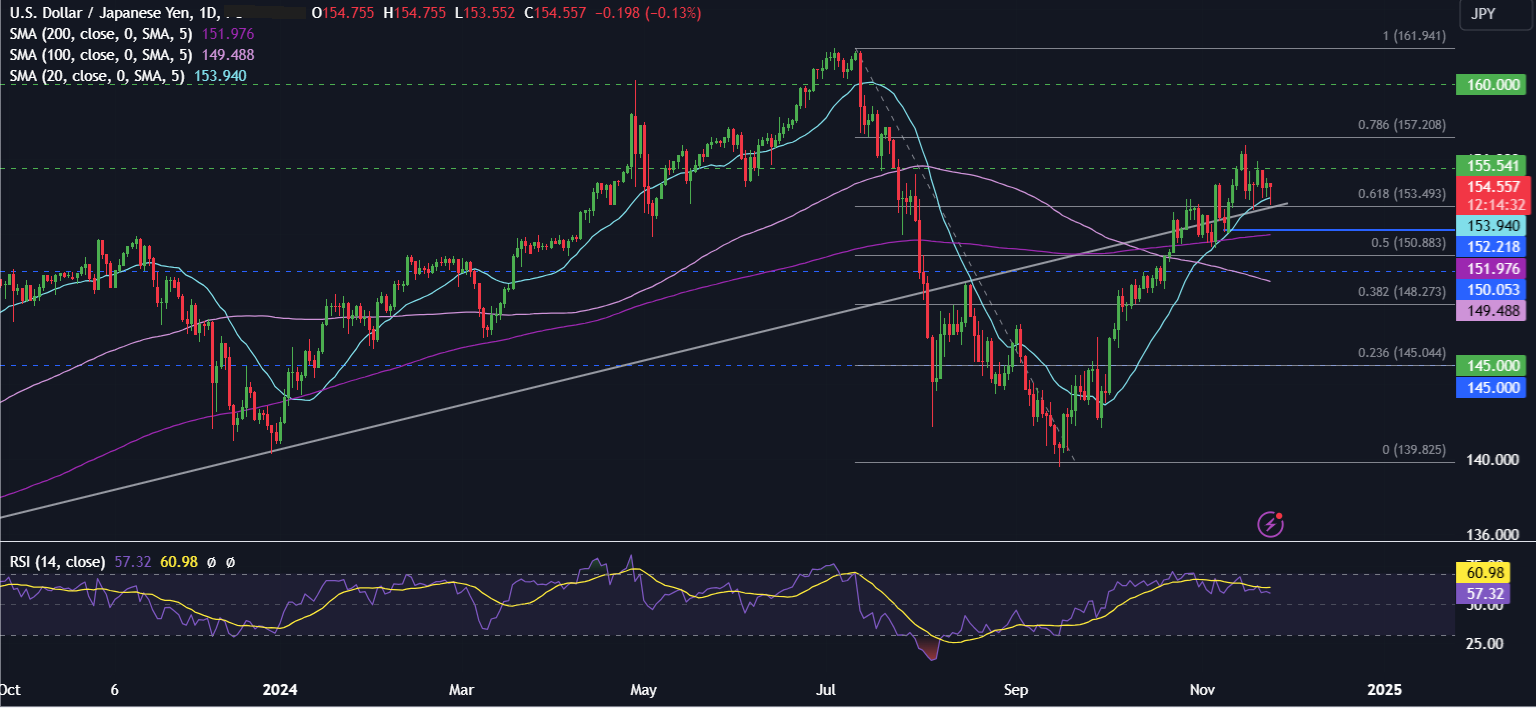
Oil
Oil rose 1% on Friday and settled at its highest level in two weeks amid the escalation of the war in Ukraine, which boosted the geopolitical risk premium. The market will remain focused on geopolitical tensions after oil rose 6% last week as Moscow stepped up its offensive against Kyiv after prison in the US allowed Ukraine to use Western missiles to strike deeper into Russia.
The market would also be looking toward next weekend’s OPEC+ meeting, where the oil cartel could push back further on unwinding voluntary oil cuts amid concerns over a supply glut in 2025 and worries over the demand outlook, particularly in China.
The content provided here is for informational purposes only. It is not intended as personal investment advice and does not constitute a solicitation or invitation to engage in any financial transactions, investments, or related activities. Past performance is not a reliable indicator of future results.
The financial products offered by the Company are complex and come with a high risk of losing money rapidly due to leverage. These products may not be suitable for all investors. Before engaging, you should consider whether you understand how these leveraged products work and whether you can afford the high risk of losing your money.
The Company does not accept clients from the Restricted Jurisdictions as indicated in our website/ T&C. Some services or products may not be available in your jurisdiction.
The applicable legal entity and its respective products and services depend on the client’s country of residence and the entity with which the client has established a contractual relationship during registration.




